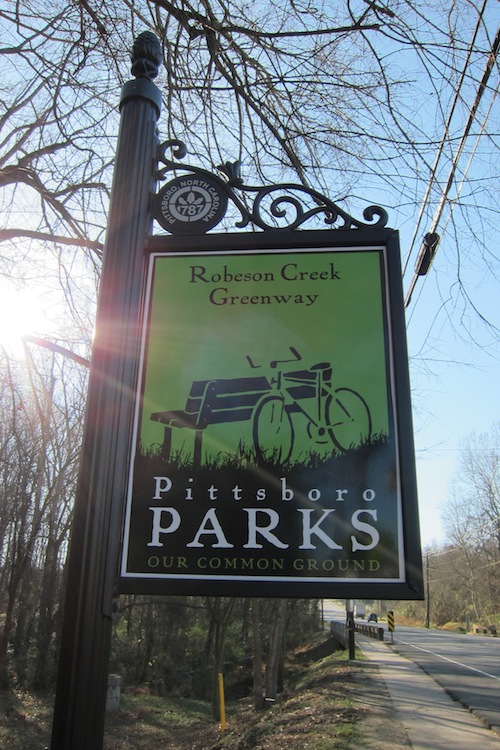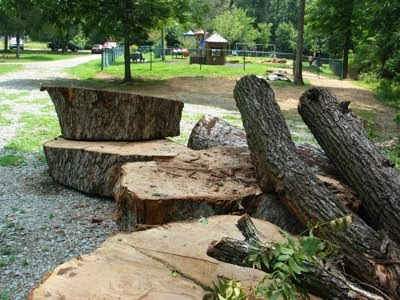The Garden and the Playground
I make no secret for my love of the blog Playscapes: here's a wonderful article from there, reposted in toto with permission:
The concatenation of the garden and the playground is so rooted in the history of play that it's strange we ever forgot it...but the equipment based play-deserts of the last fifty or so years, with nary a plant or a path in sight, show that we did.
There are two main historical antecedents for the modern conception of the playground, and they both come from Germany. The first was the creation of sand gardens (see also A Brief History of the Sandbox). In the late 19th century, piles of sand were dumped in public parks as an antidote to the delinquency of street urchins, in hopes of giving them something to do other than bother the keepers and customers of the shops that surrounded the parks.
The sand gardens of Germany represent the first organized insertion of children's play into public space. The idea quickly spread to other countries, including to Boston where the 1886 'Committee on Sand Gardens' became by 1888 the 'Committee on Playgrounds'. But most importantly, the sand gardens' social engineering ideals--that positive behaviors can be encouraged and negative ones reduced through appropriate play provision--have remained ever after a significant part of the playground conversation.
"If the authorities should order a sand heap put in every back yard of our cities, being especially careful not to neglect the tiny inclosures around which the very poor hive together, there would be less vagabondage and less youthful ruffianism. The child must needs be busy, and lacking legitimate means of occupation he will seek out those that are unlawful."
"In Germany...one of the beautiful acts of the Empress Frederick...was to set apart certain portions of all public parks for play-grounds, with sand hills upon them, for the little children. Any one who has frequented the parks of the larger German cities knows what an attractive picture the children make in their busy, happy play of digging and packing and building in the easily moulded soil."
Two distinctive views of children are represented in these quotes from Nora Archibald Smith's 1896 The Republic of Childhood. First we see the child as an unlawful ruffian--a delinquent--then as a picturesque darling engaged in busy happy play.
If the sand gardens addressed the delinquent, the Kinder Gartens of Germany were for the darling. Here we are not speaking of the early childhood schools of Friedrich Froebel. That doesn't come along until 1840, when Froebel used the term to replace what he had originally titled his (loosely translated) "Play and Activity Institute".
As this garden plan from 1809 points out, the idea of a garden for children existed well prior to Froebel. But these were gardens of privacy and of privilege, either at grand homes or sometimes exclusive schools, for the use of children assumed to be far better behaved (by breeding if not inclination) than those lower-class delinquents. The darling child is provided with a comprehensively designed landscape that includes swinging, races and ballgames, a bowling pitch, a botanical garden for learning about plants, a cowshed for learning about animals, and a house for parties and dancing.
What this early plan, and others like it, brought to the playground conversation was the idea of intentional design for the child. Eventually this would be extended to public space as well as private, and to all children as well as the privileged.
I'm struck by how public playgrounds began with the idea of the child as delinquent, and have circled today to view the child as, well, diseased. Suffering from a nature deficit and a play deficit, under threat from strangers and bullies and too-tall-slides and monkey bars on which they might bump their little heads. In a final insult, we've rejected even the grass itself as unsafe, to be covered up with rubber safety surfacing. Boo, grass. That's where your view of the child gets you.
[The image of the 1809 Kinder Garten is from
The Garden and the Playground
 |
| Children's Play Provision c. 1809 |
 |
| Children's Play Provision c. 2009 |
The concatenation of the garden and the playground is so rooted in the history of play that it's strange we ever forgot it...but the equipment based play-deserts of the last fifty or so years, with nary a plant or a path in sight, show that we did.
There are two main historical antecedents for the modern conception of the playground, and they both come from Germany. The first was the creation of sand gardens (see also A Brief History of the Sandbox). In the late 19th century, piles of sand were dumped in public parks as an antidote to the delinquency of street urchins, in hopes of giving them something to do other than bother the keepers and customers of the shops that surrounded the parks.
The sand gardens of Germany represent the first organized insertion of children's play into public space. The idea quickly spread to other countries, including to Boston where the 1886 'Committee on Sand Gardens' became by 1888 the 'Committee on Playgrounds'. But most importantly, the sand gardens' social engineering ideals--that positive behaviors can be encouraged and negative ones reduced through appropriate play provision--have remained ever after a significant part of the playground conversation.
"If the authorities should order a sand heap put in every back yard of our cities, being especially careful not to neglect the tiny inclosures around which the very poor hive together, there would be less vagabondage and less youthful ruffianism. The child must needs be busy, and lacking legitimate means of occupation he will seek out those that are unlawful."
"In Germany...one of the beautiful acts of the Empress Frederick...was to set apart certain portions of all public parks for play-grounds, with sand hills upon them, for the little children. Any one who has frequented the parks of the larger German cities knows what an attractive picture the children make in their busy, happy play of digging and packing and building in the easily moulded soil."
Two distinctive views of children are represented in these quotes from Nora Archibald Smith's 1896 The Republic of Childhood. First we see the child as an unlawful ruffian--a delinquent--then as a picturesque darling engaged in busy happy play.
If the sand gardens addressed the delinquent, the Kinder Gartens of Germany were for the darling. Here we are not speaking of the early childhood schools of Friedrich Froebel. That doesn't come along until 1840, when Froebel used the term to replace what he had originally titled his (loosely translated) "Play and Activity Institute".
As this garden plan from 1809 points out, the idea of a garden for children existed well prior to Froebel. But these were gardens of privacy and of privilege, either at grand homes or sometimes exclusive schools, for the use of children assumed to be far better behaved (by breeding if not inclination) than those lower-class delinquents. The darling child is provided with a comprehensively designed landscape that includes swinging, races and ballgames, a bowling pitch, a botanical garden for learning about plants, a cowshed for learning about animals, and a house for parties and dancing.
What this early plan, and others like it, brought to the playground conversation was the idea of intentional design for the child. Eventually this would be extended to public space as well as private, and to all children as well as the privileged.
I'm struck by how public playgrounds began with the idea of the child as delinquent, and have circled today to view the child as, well, diseased. Suffering from a nature deficit and a play deficit, under threat from strangers and bullies and too-tall-slides and monkey bars on which they might bump their little heads. In a final insult, we've rejected even the grass itself as unsafe, to be covered up with rubber safety surfacing. Boo, grass. That's where your view of the child gets you.
[The image of the 1809 Kinder Garten is from
Allgemeines teutsches Garten-Magazin oder gemeinnützige Beiträge für alle Theile des praktischen Gartenwesens, available online at Königliche Gartenbibliothek Herrenhausen - Drucke / Gottfried Wilhelm Leibniz Bibliothek - Niedersächsische Landesbibliothek. Link provided by peacay ofbibliodyssey.]
The Garden and the Playground


Comments
Post a Comment